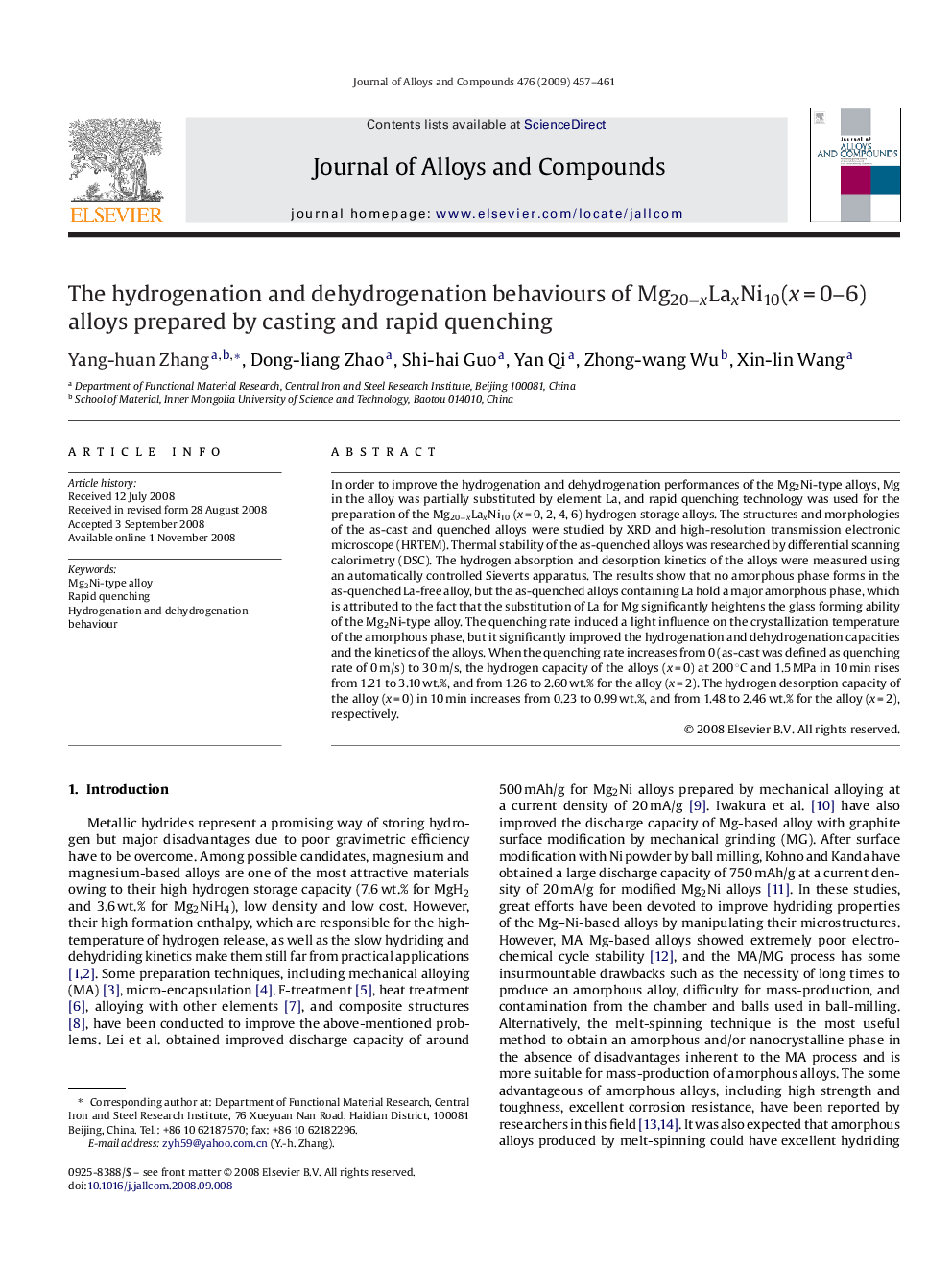| Article ID | Journal | Published Year | Pages | File Type |
|---|---|---|---|---|
| 1622589 | Journal of Alloys and Compounds | 2009 | 5 Pages |
Abstract
In order to improve the hydrogenation and dehydrogenation performances of the Mg2Ni-type alloys, Mg in the alloy was partially substituted by element La, and rapid quenching technology was used for the preparation of the Mg20âxLaxNi10 (x = 0, 2, 4, 6) hydrogen storage alloys. The structures and morphologies of the as-cast and quenched alloys were studied by XRD and high-resolution transmission electronic microscope (HRTEM). Thermal stability of the as-quenched alloys was researched by differential scanning calorimetry (DSC). The hydrogen absorption and desorption kinetics of the alloys were measured using an automatically controlled Sieverts apparatus. The results show that no amorphous phase forms in the as-quenched La-free alloy, but the as-quenched alloys containing La hold a major amorphous phase, which is attributed to the fact that the substitution of La for Mg significantly heightens the glass forming ability of the Mg2Ni-type alloy. The quenching rate induced a light influence on the crystallization temperature of the amorphous phase, but it significantly improved the hydrogenation and dehydrogenation capacities and the kinetics of the alloys. When the quenching rate increases from 0 (as-cast was defined as quenching rate of 0 m/s) to 30 m/s, the hydrogen capacity of the alloys (x = 0) at 200 °C and 1.5 MPa in 10 min rises from 1.21 to 3.10 wt.%, and from 1.26 to 2.60 wt.% for the alloy (x = 2). The hydrogen desorption capacity of the alloy (x = 0) in 10 min increases from 0.23 to 0.99 wt.%, and from 1.48 to 2.46 wt.% for the alloy (x = 2), respectively.
Keywords
Related Topics
Physical Sciences and Engineering
Materials Science
Metals and Alloys
Authors
Yang-huan Zhang, Dong-liang Zhao, Shi-hai Guo, Yan Qi, Zhong-wang Wu, Xin-lin Wang,
